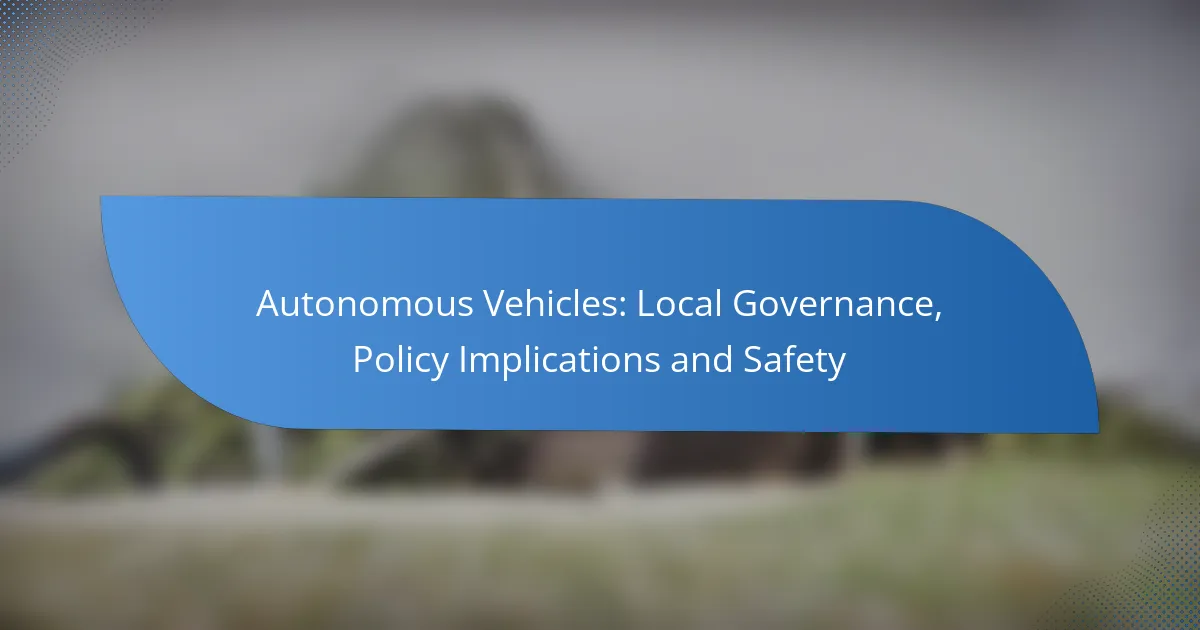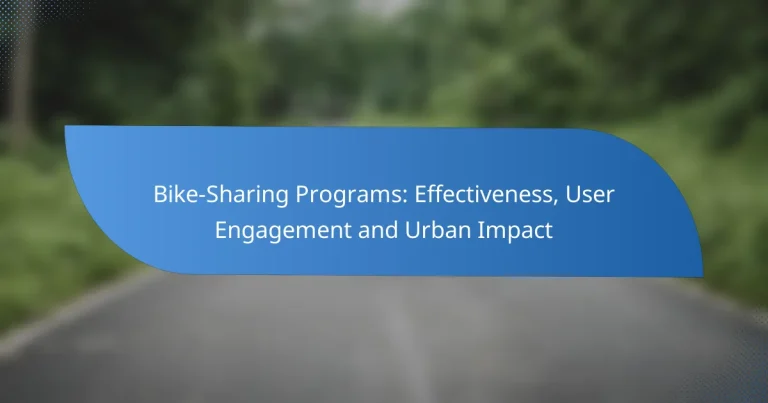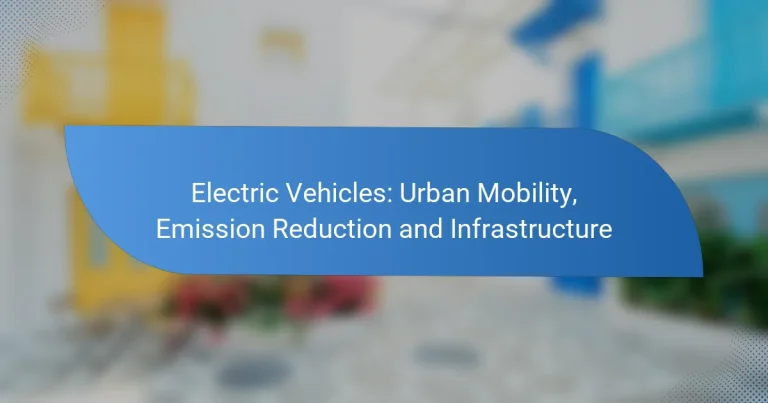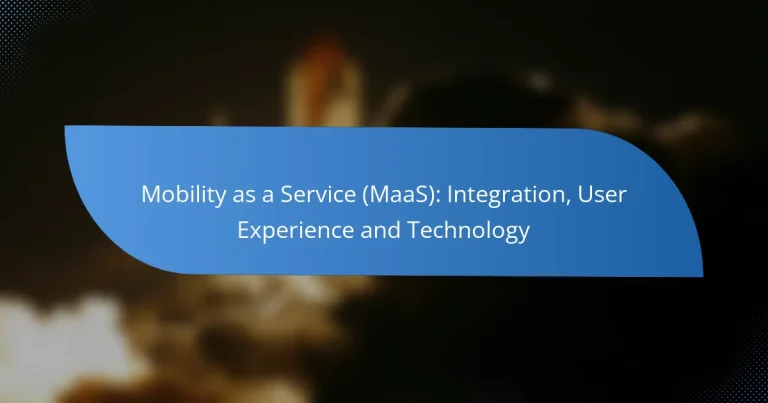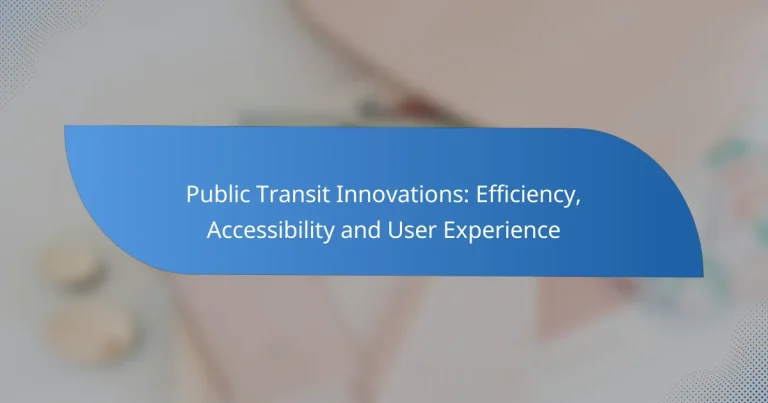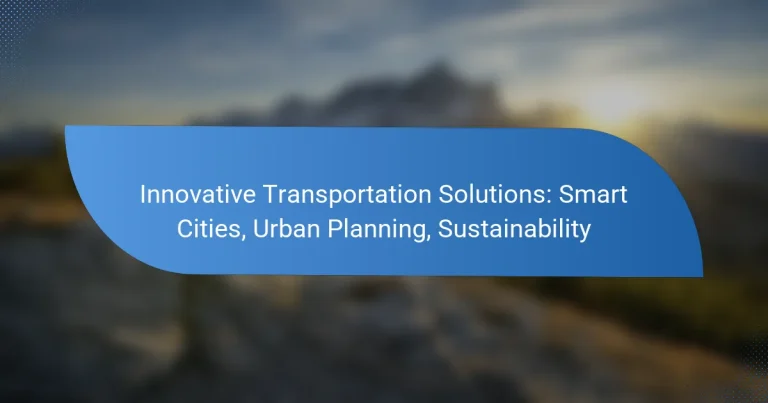Autonomous Vehicles: Local Governance, Policy Implications and Safety
As autonomous vehicles (AVs) become increasingly prevalent, local governments play a crucial role in regulating their use through state laws and city ordinances. These regulations aim to ensure public safety, establish operational guidelines, and facilitate collaboration with technology companies. Additionally, the policy implications surrounding AVs involve complex issues such as liability, insurance, and data privacy, necessitating ongoing adaptation of local governance to meet these challenges. By significantly reducing human error, AVs promise to enhance road safety and transform the landscape of transportation.
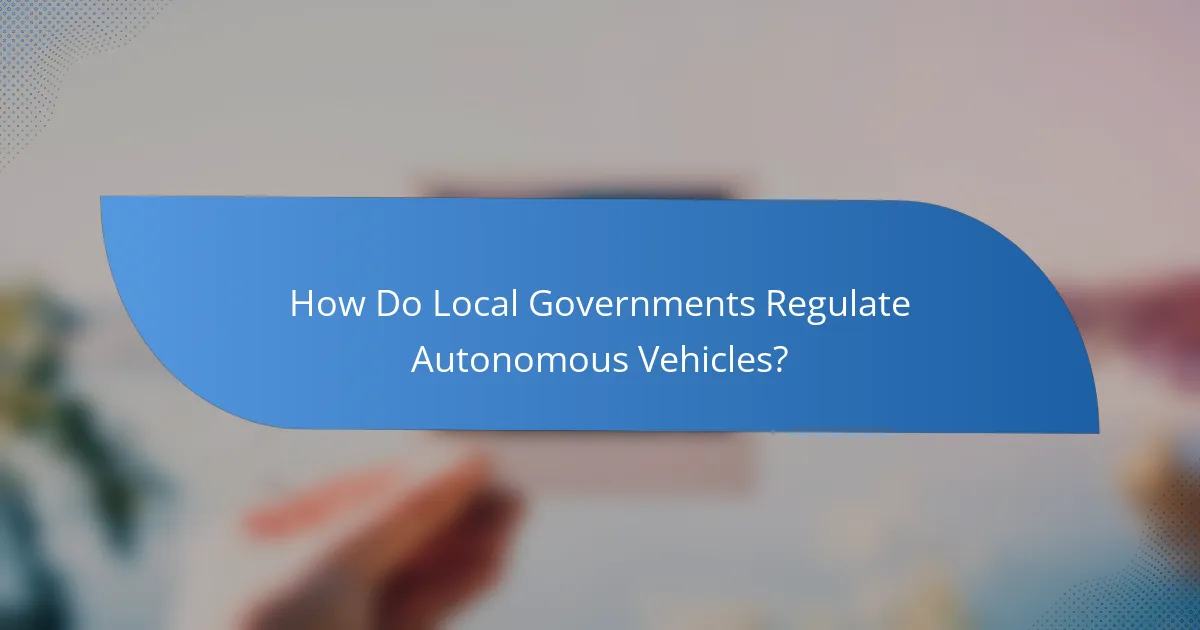
How Do Local Governments Regulate Autonomous Vehicles?
Local governments regulate autonomous vehicles through a combination of state-level laws and city-specific ordinances. These regulations focus on ensuring public safety, establishing operational guidelines, and fostering collaboration with technology companies.
State-level regulations
State-level regulations serve as the foundation for governing autonomous vehicles, often setting the legal framework for testing and deployment. Many states have enacted laws that define the operational parameters for self-driving cars, including licensing requirements and insurance mandates. For example, states like California and Arizona have established comprehensive guidelines that allow for extensive testing on public roads.
These regulations can vary significantly from one state to another, impacting how quickly and effectively autonomous vehicles can be integrated into the transportation system. Local governments must stay informed about these state laws to ensure compliance and adapt their own policies accordingly.
City-specific ordinances
City-specific ordinances address local concerns and conditions that state regulations may not fully cover. These can include restrictions on where autonomous vehicles can operate, requirements for safety features, and rules for data sharing with local authorities. For instance, a city might mandate that autonomous vehicles must yield to pedestrians at all times, regardless of state laws.
Local governments often engage with community stakeholders to develop these ordinances, ensuring that they reflect the unique needs and values of the residents. This localized approach helps build public trust and acceptance of autonomous technologies.
Public safety considerations
Public safety is a primary concern in the regulation of autonomous vehicles. Local governments must assess potential risks associated with self-driving technology, including accident rates and cybersecurity threats. They often implement safety protocols that require rigorous testing and reporting of incidents involving autonomous vehicles.
Additionally, local authorities may establish emergency response plans specifically tailored to incidents involving autonomous vehicles. This proactive approach helps ensure that first responders are prepared to handle unique challenges presented by these technologies.
Collaboration with tech companies
Collaboration between local governments and technology companies is essential for effective regulation of autonomous vehicles. Many cities partner with tech firms to pilot programs that test autonomous vehicle operations in real-world environments. These partnerships can provide valuable data that informs policy decisions and regulatory frameworks.
Local governments may also create advisory boards that include representatives from the tech industry, ensuring that regulations keep pace with technological advancements. This collaborative approach fosters innovation while addressing public safety and regulatory compliance.
Impact on urban planning
The introduction of autonomous vehicles significantly impacts urban planning and infrastructure development. Local governments must consider how these vehicles will affect traffic patterns, parking needs, and public transportation systems. For example, cities may need to redesign roadways or create designated drop-off zones to accommodate self-driving cars.
Moreover, the integration of autonomous vehicles can lead to more sustainable urban environments, as they may reduce the need for personal car ownership and encourage shared mobility solutions. Local planners should proactively incorporate these considerations into their long-term development strategies to maximize the benefits of autonomous technology.
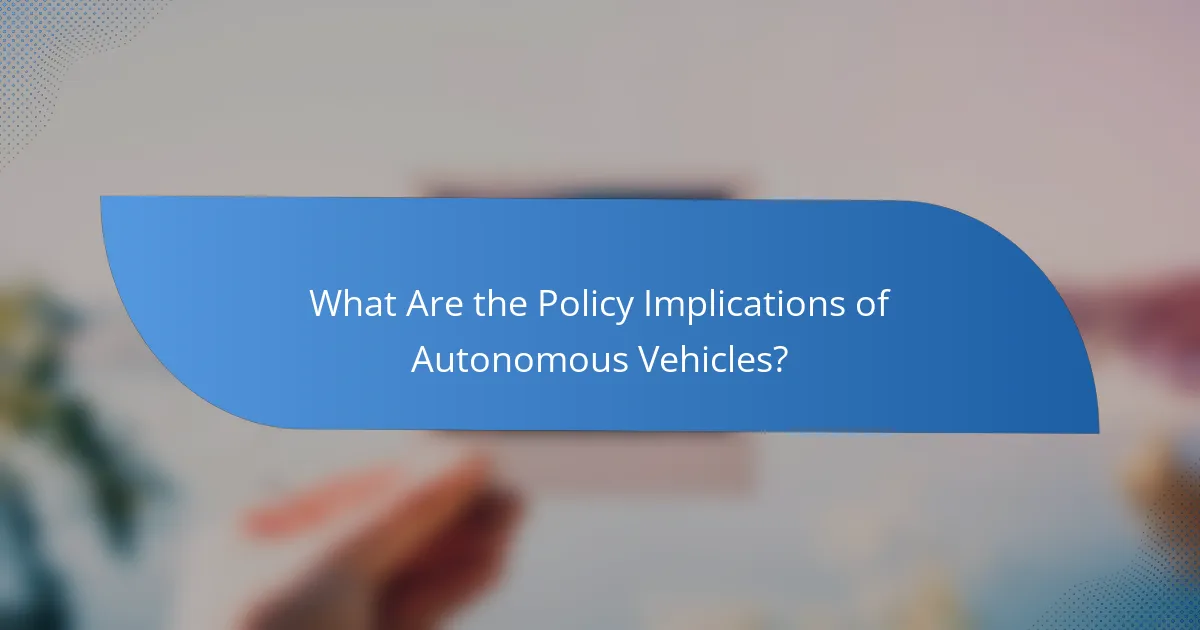
What Are the Policy Implications of Autonomous Vehicles?
The policy implications of autonomous vehicles (AVs) encompass a range of issues, including liability, insurance, data privacy, and environmental assessments. As AV technology evolves, local governments and policymakers must adapt regulations to address these challenges effectively.
Liability issues
Liability in the context of autonomous vehicles raises questions about who is responsible in the event of an accident. This could involve manufacturers, software developers, or vehicle owners, complicating traditional liability frameworks. Clear guidelines are essential to determine accountability and ensure victims receive compensation.
For instance, if an AV malfunctions due to a software error, the manufacturer may bear responsibility. However, if a driver overrides the system, liability could shift back to the owner. Establishing a clear legal framework will help mitigate disputes and foster public trust in AV technology.
Insurance frameworks
The introduction of autonomous vehicles necessitates a reevaluation of existing insurance frameworks. Traditional auto insurance models may not adequately cover the unique risks associated with AVs. Insurers will need to develop new policies that account for the reduced likelihood of human error and the complexities of shared ownership models.
For example, policies could include coverage for software updates and cybersecurity threats. Insurers might also consider usage-based models that adjust premiums based on driving behavior and vehicle performance, reflecting the evolving nature of risk in AVs.
Data privacy concerns
Data privacy is a significant concern with autonomous vehicles, as these systems collect vast amounts of data to operate safely. This data includes personal information about passengers, driving habits, and environmental conditions. Ensuring that this data is protected from unauthorized access and misuse is crucial.
Policymakers must establish regulations that govern data collection, storage, and sharing practices. For instance, AV manufacturers should implement robust encryption methods and allow users to control their data. Transparency about data usage will help build consumer confidence in AV technologies.
Environmental impact assessments
Assessing the environmental impact of autonomous vehicles is vital for sustainable urban planning. AVs have the potential to reduce emissions through optimized driving patterns and increased efficiency. However, their widespread adoption could also lead to increased vehicle miles traveled, contributing to congestion and pollution.
Local governments should conduct thorough environmental assessments before implementing AV infrastructure. This includes evaluating potential benefits, such as reduced traffic congestion, against possible drawbacks like urban sprawl. Policymakers should aim to integrate AVs into public transportation systems to maximize environmental benefits while minimizing negative impacts.
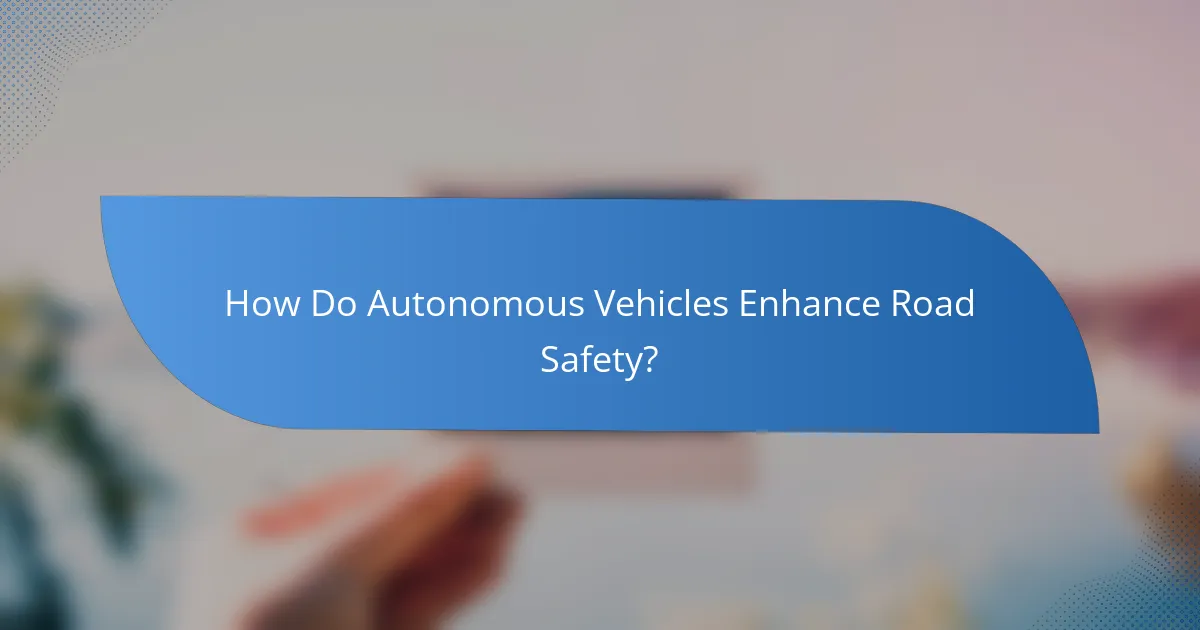
How Do Autonomous Vehicles Enhance Road Safety?
Autonomous vehicles enhance road safety primarily by reducing human error, which is a leading cause of traffic accidents. By utilizing advanced technology, these vehicles can make quicker decisions and respond to hazards more effectively than human drivers.
Reduction in human error
Human error accounts for a significant percentage of road accidents, often due to distractions, fatigue, or impaired judgment. Autonomous vehicles are designed to eliminate these factors, relying on algorithms and sensors to navigate safely. This shift can potentially reduce accidents caused by human mistakes by a substantial margin.
For example, studies suggest that fully autonomous vehicles could decrease traffic fatalities by up to 90% over time, as they consistently adhere to traffic laws and maintain safe driving practices.
Advanced safety features
Autonomous vehicles are equipped with advanced safety features such as adaptive cruise control, lane-keeping assistance, and automatic emergency braking. These technologies work together to prevent collisions and enhance overall driving safety. By continuously monitoring the environment, these vehicles can react to potential dangers faster than a human driver.
Moreover, many autonomous systems use multiple sensors, including cameras, radar, and lidar, to create a comprehensive view of the surroundings, further improving their ability to detect and respond to threats.
Real-time data sharing
Real-time data sharing among autonomous vehicles can significantly enhance road safety. Vehicles can communicate with each other and with infrastructure, sharing information about traffic conditions, hazards, and accidents. This connectivity allows for coordinated responses to potential dangers, reducing the likelihood of collisions.
For instance, if one vehicle detects a sudden obstacle, it can alert others in the vicinity, enabling them to adjust their speed or route accordingly. This networked approach can lead to safer driving environments, particularly in urban areas.
Case studies of safety improvements
Several case studies have demonstrated the safety benefits of autonomous vehicles. In cities where pilot programs have been implemented, such as San Francisco and Phoenix, there have been noticeable reductions in accidents involving autonomous vehicles compared to traditional vehicles.
Additionally, companies like Waymo and Tesla have reported significant safety metrics, showing that their autonomous systems have lower accident rates per mile driven compared to human-driven vehicles. These real-world applications provide valuable insights into the potential of autonomous technology to enhance road safety on a larger scale.
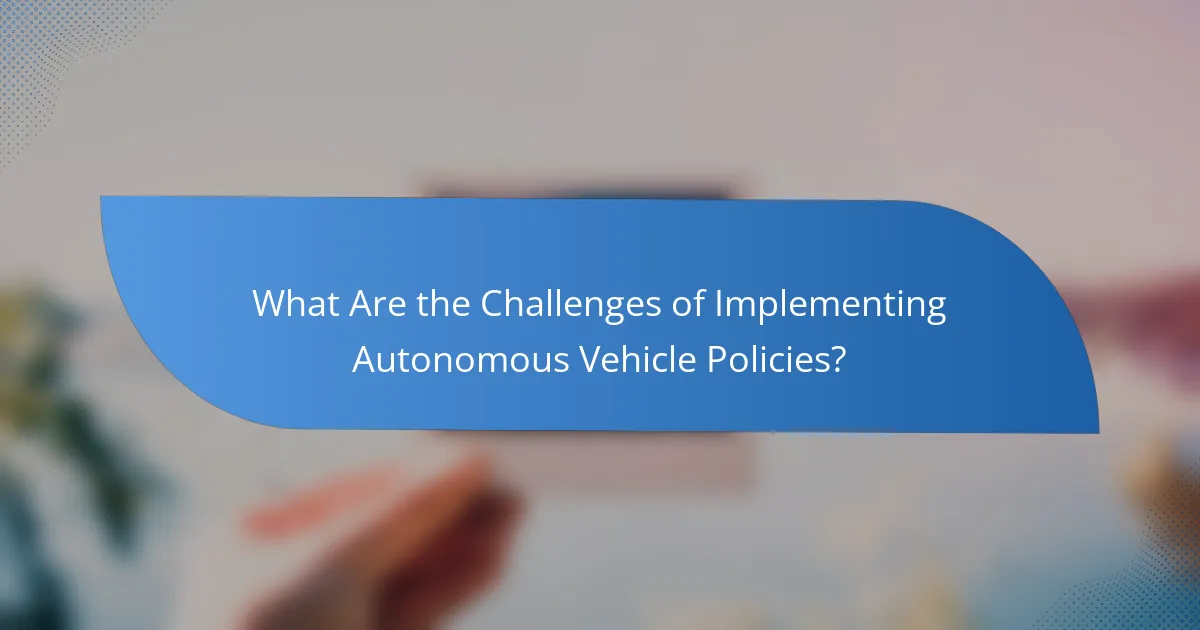
What Are the Challenges of Implementing Autonomous Vehicle Policies?
Implementing autonomous vehicle policies faces several significant challenges, including public acceptance, infrastructure readiness, technological limitations, and legal hurdles. Addressing these issues is crucial for the successful integration of autonomous vehicles into existing transportation systems.
Public acceptance and trust
Public acceptance and trust are vital for the widespread adoption of autonomous vehicles. Many individuals remain skeptical about the safety and reliability of these technologies, influenced by media coverage and personal experiences. Building trust requires transparent communication about safety measures and successful pilot programs.
Engaging communities through demonstrations and educational campaigns can help alleviate fears. For instance, cities could organize events where residents experience autonomous vehicles firsthand, fostering familiarity and confidence.
Infrastructure readiness
Infrastructure readiness is essential for supporting autonomous vehicles, which often rely on advanced road systems and communication networks. Many urban areas lack the necessary infrastructure, such as dedicated lanes or smart traffic signals, to accommodate these vehicles effectively.
Local governments should assess current infrastructure and identify areas needing upgrades. Investments in smart city technologies, such as vehicle-to-infrastructure communication systems, can enhance the operational efficiency of autonomous vehicles.
Technological limitations
Technological limitations pose a significant barrier to the implementation of autonomous vehicle policies. Current systems may struggle with complex driving environments, adverse weather conditions, or unexpected obstacles. These limitations can hinder the vehicles’ ability to operate safely in all scenarios.
Continuous advancements in artificial intelligence and sensor technology are necessary to overcome these challenges. Collaborations between tech companies and automotive manufacturers can accelerate the development of more robust systems.
Legal hurdles
Legal hurdles complicate the deployment of autonomous vehicles, as existing regulations often do not account for this new technology. Issues such as liability in accidents, insurance requirements, and vehicle registration need to be addressed to create a clear legal framework.
Policymakers should work on updating laws and regulations to reflect the realities of autonomous driving. This may involve creating specific categories for autonomous vehicles and establishing guidelines for testing and operation on public roads.
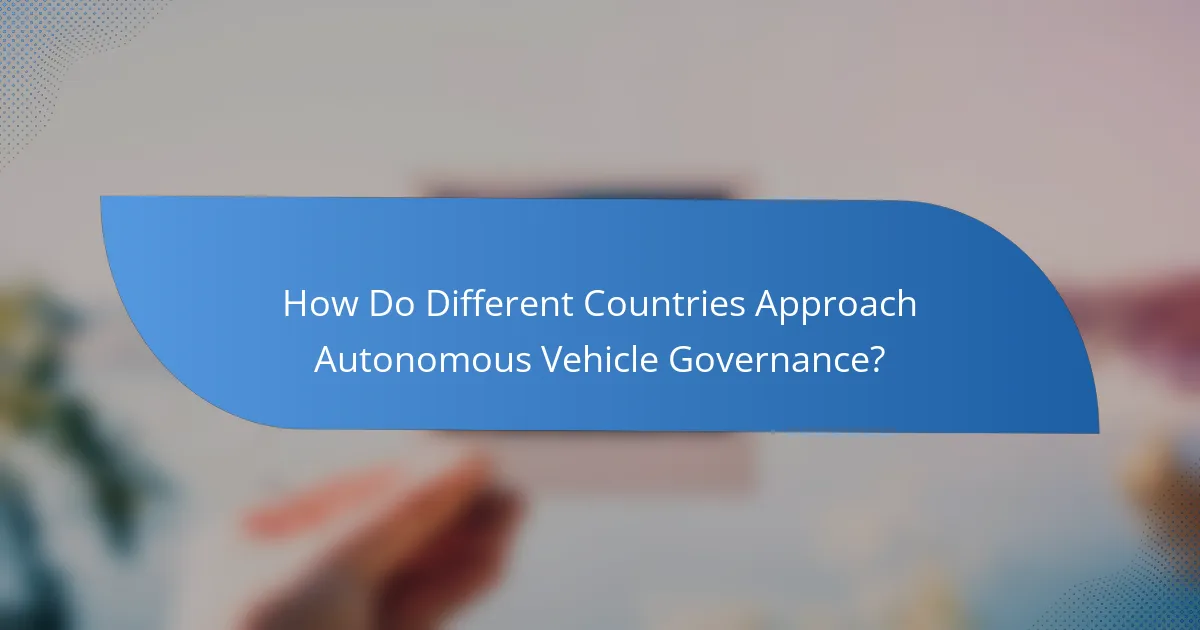
How Do Different Countries Approach Autonomous Vehicle Governance?
Countries vary significantly in their governance of autonomous vehicles, reflecting diverse legal frameworks, safety standards, and public acceptance levels. Some nations have established comprehensive regulations, while others are still in the exploratory phase, focusing on pilot programs and research initiatives.
United States regulatory landscape
The regulatory landscape for autonomous vehicles in the United States is complex and fragmented, involving federal, state, and local authorities. The National Highway Traffic Safety Administration (NHTSA) provides guidelines, but individual states have the authority to enact their own laws, leading to a patchwork of regulations across the country.
Many states have passed legislation to facilitate testing and deployment of autonomous vehicles, often requiring permits and safety assessments. For example, California mandates that companies must report any disengagements during testing, which helps assess the technology’s reliability and safety.
Stakeholders should be aware of the varying requirements by state, as some may impose stricter rules regarding liability and insurance. Engaging with local authorities early in the process can help navigate these complexities and ensure compliance with applicable regulations.
